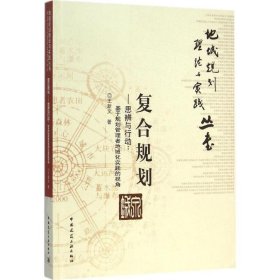
基础会计学(英文版)
正版图书,可开发票,请放心购买。
¥ 29.38 7.5折 ¥ 39 全新
库存23件
广东广州
认证卖家担保交易快速发货售后保障
作者李敏
出版社人民交通出版社
ISBN9787114170065
出版时间2021-01
装帧平装
开本16开
定价39元
货号1202302238
上书时间2024-04-01
- 店主推荐
- 最新上架
商品详情
- 品相描述:全新
- 商品描述
-
作者简介
李敏,Min Li is a lecturer of accounting at School of Economics and Management,Chang'an University,where she teaches Accounting, Finan Accounting, Cost Management and Accounting System Design.Min has an undergraduate accounting degree and a PhD from Chang'an University.
Min's main career interest is accounting education. She has been recognized and chosen by her students and peers.In 2013 and 2017, she was awarded the Outstanding Teacher at Chang'an University.In 2018, she was admitted to Excellent Supervisor of Graduation Thesis at Chang'an University.
Min's primary teaching and research interests are concerned with the finan accounting and reporting,and cost management.She has presided and participated in a number of national and provin proiects, including the Shaanxi So Science Fund Project and the Major Theoretical and Practical Problems Research Project in the Shaanxi so science field.She has also conducted two projects of the Shaanxi Transport Management Bureau. Min has written a number of articles for scholarly journals. More than 10 academic papers have been published, among which 3 have been indexed by SCI,SSCI and 3 by CSSCI.
目录
Chapter 1 Introduction to Finan Accounting
1.1 Introduction
1.2 Accounting Defined
1.3 Business Organizations
1.4 The Basic Accounting Equation
1.5 Finan Statements
1.6 Generally Accepted Accounting Principles (GAAP)
Summary of This Chapter
Chapter 2 The Accounting Process
2.1 Accounts
2.2 Doubleentry Accounting
2.3 The Accounting Cycle
2.4 Using Formal Accounting Records
2.5 The Trial Balance and Balance Sheet
Summary of This Chapter
Chapter 3 Singlestep Income Statement
3.1 The Operating cycle
3.2 The Two Accounting Methods
3.3 Income Statement Accounts
3.4 Revenue Recognition
3.5 Expense Recognition
3.6 The Expanded Accounting Equation
3.7 Unadjusted Trial Balance
Summary of This Chapter
Chapter 4 The Use of Adjusting Entries
4.1 Adjusting Entries
4.2 The Adjusted Trial Balance
4.3 Prepare Finan Statements
4.4 The Closing Process
Summary of This Chapter
Chapter 5 Accounting for the Sale of Goods
5.1 The Basics of Merchandizing
5.2 Inventory Systems
5.3 Inventory Purchase under a Perpetual Inventory System
5.4 Inventory Sale under a Perpetual Inventory System
5.5 Merchandizing Multistep Income Statement
Summary of This Chapter
Chapter 6 Inventory Costing Methods
6.1 Types of Inventory
6.2 Three Inventory Cost Flow Assumptions
6.3 Finan Statement Effects of Different Inventory Cost Flows
6.4 Lower of Cost or Market (LCM)
Summary of This Chapter
Chapter 7 Accounts Receivable and Notes Receivable
7.1 Extending Credit
7.2 Accounts Receivable and Bad Debts Expense
7.3 Two Methods for Estimating Bad Debts Expense
7.4 Writeoffs and Recoveries
7.5 Notes Receivable and Interest Revenue
Summary of This Chapter
Chapter 8 Longlived Assets
8.1 Definition and Classification
8.2 Accounting Decision for Tangible Assets
8.3 Depreciation
8.4 Accounting Decision for Intangible Assets
8.5 Goodwill
8.6 Disclosure
Summary of This Chapter
Chapter 9 Debt Financing: Liabilities
9.1 The Role of Liabilities
9.2 Current Liabilities
9.3 NonCurrent Liabilities
9.4 Contingent Liabilities
Summary of This Chapter
Chapter 10 Debt Financing: Bonds
10.1 Bonds and Bond pricing
10.2 Accounting for a Bond Issue
10.3 Interest Expense on Bonds Issued
10.4 Bond Retirements
Summary of This Chapter
Chapter 11 Equity Financing
11.1 Equity Financing and Debt Financing
11.2 Main Elements of Stockholders’ Equity
11.3 Treasury stock
11.4 Dividends and Stock Split
11.5 Preferred Stock
11.6 Retained Earnings
Summary of This Chapter
Chapter 12 The Statement of Cash Flows
12.1 Finan Statement Reporting
12.2 Preparing the Statement of Cash Flows
12.3 Interpreting the Statement of Cash Flows
Summary of This Chapter
Chapter 13 Framework for Finan Statement Analysis
13.1 Introduction to Finan Analysis
13.2 Ratio Analysis
13.3 Horizontal and Vertical Analyses
13.4 Summary of Finan Ratios
13.5 Underlying Accounting Concepts
Summary of This Chapter
References
内容摘要
This textbook focuses on finan accounting, which provides finan information primarily for decisionmakers outside the business entity. The basic goal of this textbook is to introduce you to fundamental accounting concepts, the basic accounting principles, and the elements of finan statements. In addition, you would gain an understanding of the accounting cycle, learn how to prepare basic finan statements, and perform analysis of those statements. Students acquire a basic knowledge of the language of business.
— 没有更多了 —





















以下为对购买帮助不大的评价